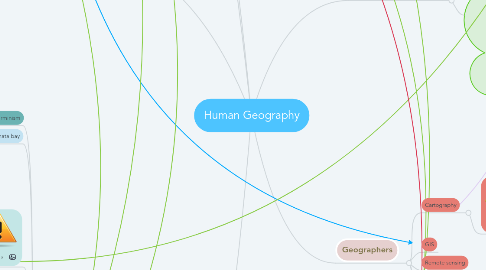
1. Modernization
1.1. Urban heat island
1.1.1. Hot air
1.1.1.1. air quality
1.1.2. Central business district
1.2. World systems theory
1.2.1. Dependency Theory
1.2.1.1. Commodity chain
1.3. Global Warming
1.3.1. Natural disasters
1.3.1.1. Coping strategies
1.3.1.2. Risk
1.3.1.2.1. Risk management
1.3.1.2.2. Risk perception
1.3.1.2.3. Vulnerbility
1.3.2. stratospheric ozone depleteion
1.3.2.1. ozone hole
1.3.3. Greenhouse gas
1.3.3.1. greenhouse effect
1.3.4. Anthropogenic climate change
1.3.4.1. drought
1.4. Kuznet's curve
1.5. Fossil fuels
1.5.1. acid rain
2. Enivronmentailsm
2.1. Conservation
2.1.1. Preservation
2.1.2. non consumptive water use
2.1.3. water access
2.1.3.1. international water basins
2.2. Green issues
2.2.1. Earth summit
2.2.1.1. Earth day
2.2.2. Discourse
2.2.3. Green Revolution
2.3. Environmental justice
2.3.1. Politcal ecology
2.3.1.1. Feminist political ecology
2.3.2. Environmental racism
3. Exploitation
3.1. Hetch Hetchy Valley
3.2. Dust bowl
3.3. Neoliberalism
3.4. overfishing
3.5. privatization of water
3.5.1. tragedy of the commons
3.5.2. use of water
3.5.2.1. water footprint
3.5.2.1.1. virtual water footprint
4. Human development
4.1. Environmental determinism
4.1.1. Socionature
4.2. Minamata bay
4.3. Disasters
4.3.1. Chernobyl
4.3.1.1. nuclear waste
4.3.1.2. toxic waste
4.3.2. Bhopal disaster
4.3.2.1. Environmental history
4.3.2.1.1. narrative
4.3.2.1.2. Tree ring analysis
4.3.2.1.3. Ice cores
4.3.2.1.4. carbon c14
4.3.2.1.5. Pollen analysis
4.3.3. Fukushima
4.4. Population
4.4.1. fertility rate
4.4.1.1. exponential growth
4.4.1.1.1. population policy
4.4.1.1.2. carrying capacity
4.4.1.2. population eras
4.4.1.2.1. demographic tranistion
4.4.2. immigration
4.4.3. emigration
4.5. agriculture
4.5.1. Sustainable Yield
4.5.1.1. Sustainable development
4.5.1.1.1. IPAT model
4.5.1.2. food self-sufficiency
4.5.1.2.1. food availability
4.5.1.2.2. food sovereignty
4.5.1.3. subsistence agriculture
4.5.1.3.1. urban agriculture
4.5.1.3.2. intercropping or polyculture
4.5.2. agribusiness
4.5.2.1. commercial agriculture
4.5.2.1.1. corporate farm
4.5.2.1.2. plantation agriculture
4.5.2.1.3. genetically modified (GM) seeds and crops
4.5.2.1.4. broad spectrum pesticides
4.5.3. intensive agriculture
4.5.3.1. intensive traditional agriculture
4.6. infrastructure
4.6.1. aquifer
4.6.2. dam
4.6.3. qanat
4.6.4. run off
5. Physical geography:
5.1. Biosphere
5.1.1. Climate
5.1.1.1. Biomes
5.1.1.1.1. Rainforest
5.1.1.1.2. Tundra
5.1.1.1.3. Desert
5.1.1.1.4. Taiga
5.1.1.1.5. Savanna
5.1.1.1.6. Ecosystem
5.1.2. Seasons
5.1.3. Atmosphere
5.1.3.1. hydrologic cycle
5.1.3.1.1. evaporation
5.1.3.1.2. precipitation
6. Geographers
6.1. Cartography
6.1.1. Scale
6.1.1.1. Politics of scale

